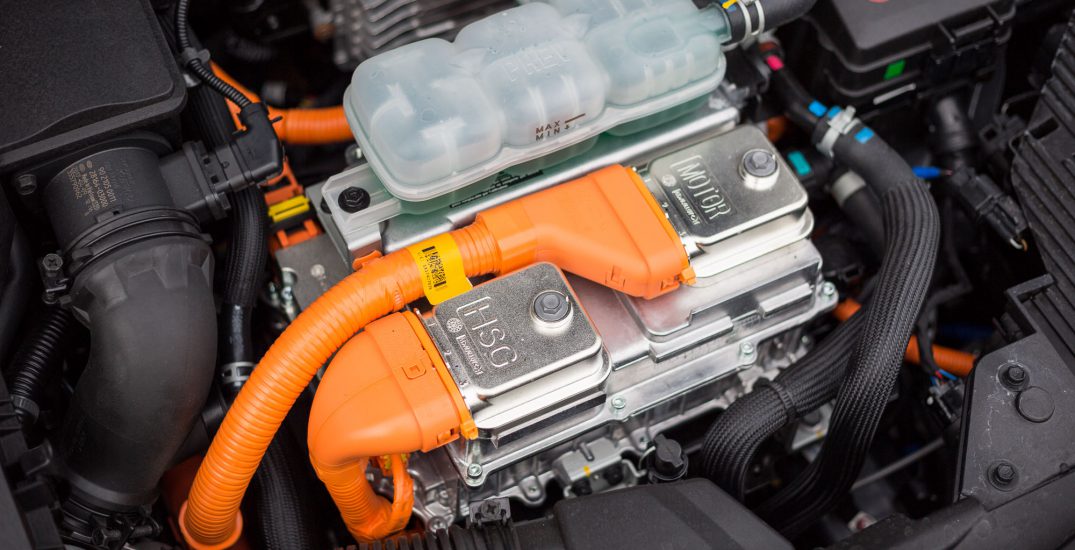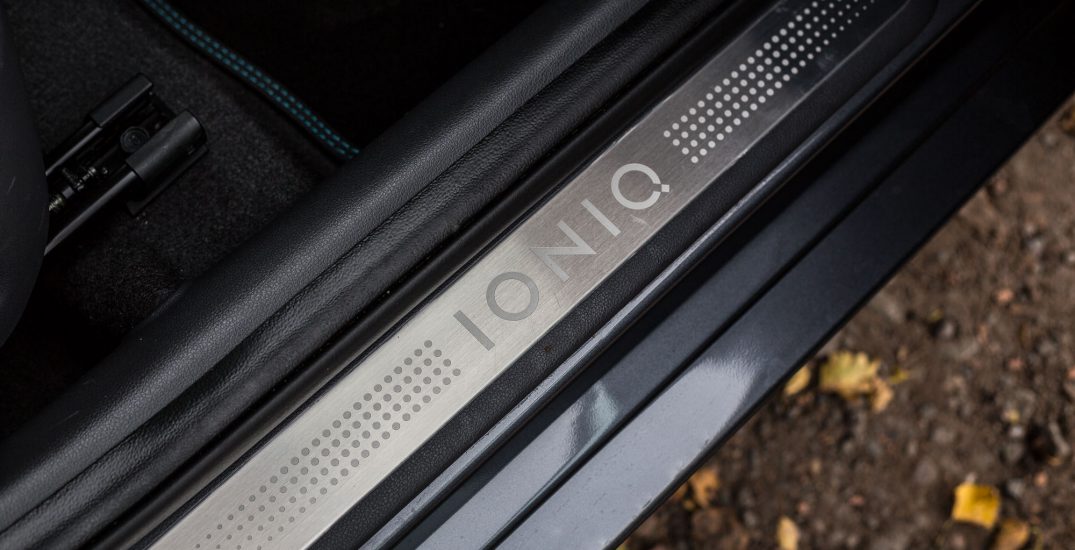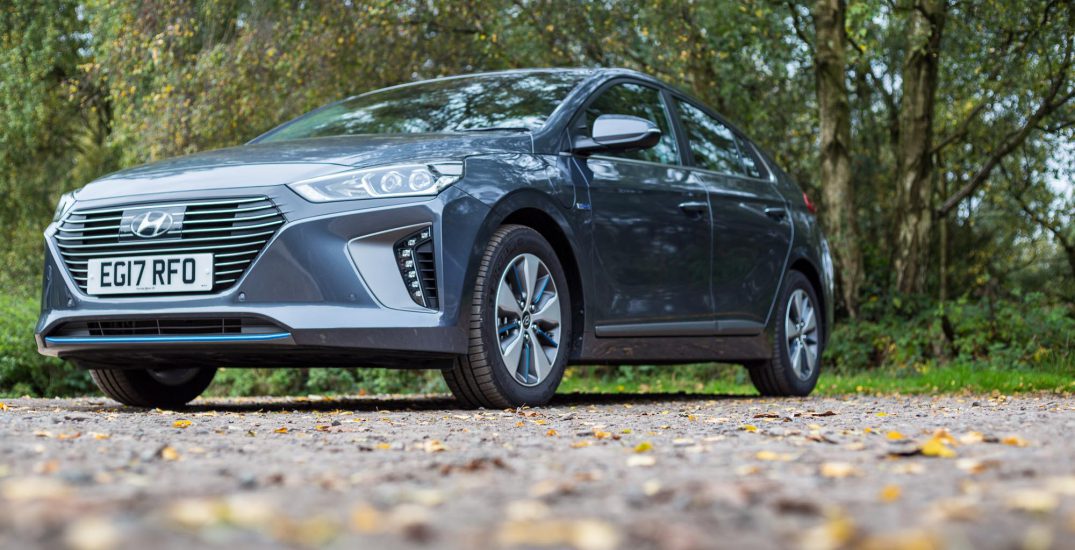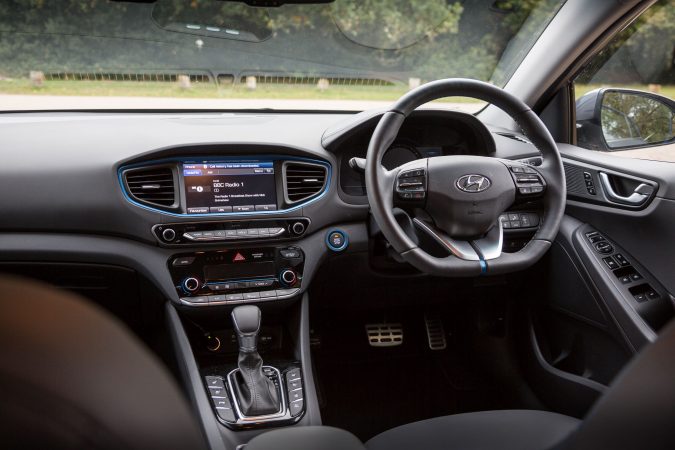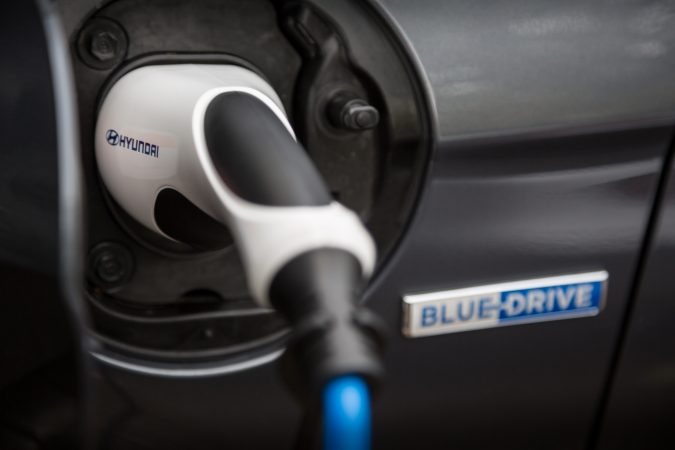Driven: 2017 Hyundai IONIQ Premium SE Review
After a week-long test of the Hyundai IONIQ Premium SE, here are my thoughts on this modern plug-in hybrid.
What is the Hyundai IONIQ Premium SE About?
Hyundai has created a model of car that comes with three innovative drivetrain choices. The 3 available are plug-in, hybrid, and electric. This gives the brand the ability to make one car to fit a range of needs.
The model that we are testing is the hybrid plug-in version. The plug-in version, of course, comes with the engine, the e-motor, dual clutch transmission and batteries.
The design of the Hyundai IONIQ certainly looks futuristic. Looking at the front of the car, you can see there is a hugely aerodynamic approach with the design of this car. The wide front grille is carefully crafted to manage just the right amount of air through it and the rest around it. At the bottom, there is a hint of blue on the splitter to indicate that the car is a hybrid.
There isn’t a lot to report about the side profile, only the aerodynamically designed alloy wheels. And towards the rear of the car, the key feature is the integrated spoiler that sits in between the rear windscreen.
The IONIQ uses a 1.6-litre petrol engine that puts out 105 ps and is combined with an electric motor that contributes 42PS. The power goes to the wheels using a dual clutch transmission. There is also an onboard 1.56 kWh lithium-ion battery. Hyundai say that the car is capable of achieving 83.1 mpg and 32 g/km of Co2.
How Does it Drive?
It is always a pleasure to jump into a hybrid car and turn on the system. Apart from a polite chime, there is never really any engine noise to report. It does sound like you have forgotten to turn the car on. But with a quick look at the dashboard you’ll notice a green symbol lets you know the car is ready to move. Slipping the car into drive, you’re able to move off with the electric drive mode taking priority.
With one button you can take the car out of EV mode into Hybrid mode, which allows you to conserve your battery power and allow the engine to kick in. This is useful if you know you’re likely to get stuck in traffic later in your journey.
The electric motor works very well to move the car along at a reasonable pace. Where more power is required the petrol engine kicks in as and when. The car has 31 miles range using the battery alone, and the petrol engine adds an additional 400+ miles to the range. This all means the car is capable of travelling around the country as any other combustion car would.
After spending a bit of time with the car, the real benefits of the hybrid drivetrain come once you hit traffic. Slow-moving or stop/start traffic are a great way to waste a lot of fuel, but gliding through in electric mode feels like a great cheat.
The Hyundai IONIQ is rammed full of technology. And one of the key features of the car comes with is the Lane Departure Warning System with Lane Keep Assist. This system keeps the car centred on a well-marked-out motorway lane, taking some tension away from your arms. The car also comes with Smart Cruise Control which will work for speeds higher than 5 miles an hour and keeps a safe distance from the car in front.
Other safety systems on the car include Blind Spot Detection which notifies you if you indicate to move into a lane with the car in your Blind Spot. This is fantastic for preventing simple accidents.
Lastly, the car comes with Autonomous Emergency Braking which gives the car the ability to brake independently if it might collide with a pedestrian or another vehicle.
During my time testing the car I found it to be very economical, however, I didn’t get near the 81mpg claimed. The car is also capable of regenerative braking, meaning that you can regain energy wasted when you are required to brake. The driver’s instruments give you a nice display of the power you output and the charge gained from regenerative braking.
What is it Like Inside?
The interior of the Hyundai IONIQ in Premium SE trim is not too dissimilar from any of the other Hyundai models. Which isn’t a bad thing at all. The one giveaway in this car is the blue inserts are scattered around the interior trim, indicating that you are in a hybrid vehicle.
I do have to say that the build quality on the car is fantastic, and the use of materials is great. Additionally, knowing the Hyundai IONIQ is built on a budget it is at a fantastic balance point.
The infotainment system operates with a large touchscreen, which works well. The driver’s instruments are now fully digitised and the high definition graphics are visually pleasing. The system shows you all the information you need.
The space inside the car is also certainly an important factor in making this car a positive space to occupy. Interior space compared to the overall footprint of the car is great. The boot has a nice wide hatch opening to allow for easy loading and unloading. However, there is a noticeable boot lip which you have to lift things over.
The Experience
The experience of driving the Hyundai IONIQ is certainly a notable one after spending some time testing. In ways it made me feel as if I was helping to protect the environment. Also, the benefits of having less noise and vibration are really noticeable when driving in electric mode. Let’s not forget, of course, about those cheeky savings from running electric over petrol.
Verdict
The Hyundai IONIQ plug-in hybrid is a fantastic choice if you are looking for an efficient car in 2017/2018. We don’t quite know what the future will bring as we go through this shift in the market. But the IONIQ benefits from electric without the disadvantages of having that restricted range, which in my opinion is a great place to be.
Specification
2017 Hyundai IONIQ Premium SE
- Price: £24,485
- Engine: 1.6 litre petrol and electric motor
- Power: 105PS Engine (42PS Electric)
- Torque: 147 Nm
- Transmission: 6 Speed DCT
- 0-62mph: 10.8 seconds
- Top speed: 115 mph
- Weight: 1,370 kg
- Economy combined: 83.1 mpg
- CO2: 32 g/km
Author: Paul Hadley





